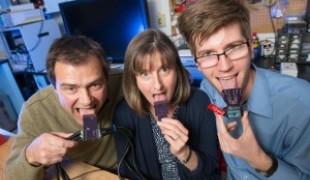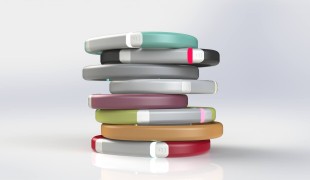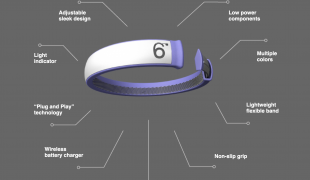- 7452
- 428
- 15
- 14
- 3
- Help Ukraine
About the solution
Honda was inspired by a deaf person he met at a cultural festival, who showed him around using gestures.
This device enables a deaf user to pick up on sounds such as alarms in a way they can register.
“I became very interested in deaf communication and I joined the research society. I studied sign language, volunteered as a sign language interpreter, and established a sign language circle at my university,’ he explains.
All of this inspired Honda to find a sound-based solution for everyday life for deaf people when he was looking for a graduate project in 2012. This eventually became the Ontenna. While looking like an ordinary hairpin, it is actually a mini-computer that conveys vibration through the user’s skin. Attached to your hair (though there is also an earring version), it is easy and comfortable to wear too. Sounds in the range from 30 dB to 90 dB are transformed into up to 256 different levels of vibration and light, enabling the wearer to associate certain patterns and noise levels with certain buzzing sensations.
This innovation was developed with the help of the MITOU Program, a bi-annual program aimed at promoting software engineering solutions and funded through the Governmental IT Promotional Agency. With this backing and 3D printing technology, Tatsuya Honda has already manufactured over 200 different prototypes that are being extensively testing.
Adapted from: http://bit.ly/2gcSSwW
More info: http://ontenna.jp/
What about you, do you have any solutions? Please share them with the Patient Innovation community!
https://www.youtube.com/watch?time_continue=2&v=NfIaycdBdc4
This solution shall not include mention to the use of drugs, chemicals or biologicals (including food); invasive devices; offensive, commercial or inherently dangerous content. This solution was not medically validated. Proceed with caution! If you have any doubts, please consult with a health professional.
DISCLAIMER: This story was written by someone who is not the author of the solution, therefore please be advised that, although it was written with the utmost respect for the innovation and the innovator, there can be some incorrect statements. If you find any errors please contact the patient Innovation team via info@patient-innovation.com
-
• Fri, 09/13/2019 - 20:15
Amazing things can be done from 3D printing like this one. But there are no [url=https://www.cheap55printing.com/]cheap printing services[/url] in the world of 3D printing. And if there are they are very few and not on a large scale.
• Fri, 09/13/2019 - 20:16
Amazing things can be done from 3D printing like this one. But there are no cheap printing services in the world of 3D printing. And if there are they are very few and not on a large scale.
https://www.cheap55printing.com/
-
-
398
-
0
-
4533

Team creates device that allows "listening" through tongue
COMMUNICATION: Communicating, whether by speaking, listening, or other means
Hearing Disorders
Assistive Technology access
AI algorithm
Hearing loss or ringing in the ears (tinnitus)
Regaining sensory function
Promoting inclusivity and social integration
Improving Speech and Communication
Neurology
Otorhinolaryngology
United States
-
-
-
665
-
1
-
12525

Man invents wristband to help deaf people be more aware of their surroundings
COMMUNICATION: Communicating, whether by speaking, listening, or other means
Social interaction
Congenital Deafness
Assistive Daily Life Device (to help ADL)
5 Senses support devices: (glasses, hearing aids, headphones...)
AI algorithm
Difficulty speaking or understanding speech
Cognitive impairment
Confusion
Sensory disturbances (e.g., hypersensitivity to touch, temperature changes)
Regaining sensory function
Promoting inclusivity and social integration
Improving Speech and Communication
Otorhinolaryngology
South Africa
-
-
-
305
-
2
-
3574

Patient develops hands-free cursor controller
-
 en
en
PierceCarmelo • Fri, 09/13/2019 - 20:07
Amazing things can be done from 3D printing like this one. But there are no cheap printing services in the world of 3D printing. And if there are they are very few and not on a large scale.